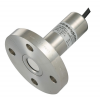Liquid level sensors with cooling elements for isolating a high media temperature or where the whole device can be submerged in a hot fluid.
Products
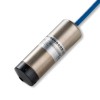 LMK458 Marine Approved Hydrostatic Level Transmitter - Marine approved level transmitter with 4-20mA output for measuring level of contents inside ship ballast, fuel, liquid cargo or wastewater tanks
LMK458 Marine Approved Hydrostatic Level Transmitter - Marine approved level transmitter with 4-20mA output for measuring level of contents inside ship ballast, fuel, liquid cargo or wastewater tanks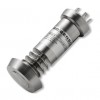 DMP331P Hygienic Flush Pressure Transmitter - Sanitary pressure sensor wth exposed diaphragm with no crevices for high temperatures up to 300 Degrees Celsius in ranges from 100mb up to 40 bar gauge or absolute
DMP331P Hygienic Flush Pressure Transmitter - Sanitary pressure sensor wth exposed diaphragm with no crevices for high temperatures up to 300 Degrees Celsius in ranges from 100mb up to 40 bar gauge or absolute
Applications
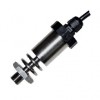 10psig 4-20mA oily wastewater pressure sensor with hi-temp protection for tank level gauging use - A low range hi-temp media 150°C/302°F protected max gauge pressure sensor for tank level gauging use to measure pressure of oily wastewater over a range of 0 to 10 psi g from the 1/4 NPT male process connection, and sending the corresponding 4-20mA signal through the weatherproof cable electrical connection.
10psig 4-20mA oily wastewater pressure sensor with hi-temp protection for tank level gauging use - A low range hi-temp media 150°C/302°F protected max gauge pressure sensor for tank level gauging use to measure pressure of oily wastewater over a range of 0 to 10 psi g from the 1/4 NPT male process connection, and sending the corresponding 4-20mA signal through the weatherproof cable electrical connection.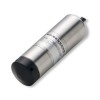 3m range 4-20mA output submersible hot water tank level sensor - A hi-temp media 125°C/257°F max submersible water level sensor for submerging in a hot water tank and measuring the depth over a range of 0 to 3m from the nose cone, and sending the corresponding 4-20mA signal through the submersible cable electrical connection.
3m range 4-20mA output submersible hot water tank level sensor - A hi-temp media 125°C/257°F max submersible water level sensor for submerging in a hot water tank and measuring the depth over a range of 0 to 3m from the nose cone, and sending the corresponding 4-20mA signal through the submersible cable electrical connection.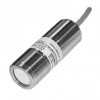 6m range 4-20mA submersible animal feed tank level and PT100 sensor - A hi-temp media 125°C/257°F max, RTD temperature measurement submersible liquid level sensor for submerging in an animal feed tank and measuring the depth over a range of 0 to 6m from the flush diaphragm, and sending the corresponding 4-20mA signal through the submersible cable electrical connection.
6m range 4-20mA submersible animal feed tank level and PT100 sensor - A hi-temp media 125°C/257°F max, RTD temperature measurement submersible liquid level sensor for submerging in an animal feed tank and measuring the depth over a range of 0 to 6m from the flush diaphragm, and sending the corresponding 4-20mA signal through the submersible cable electrical connection.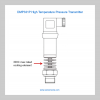 2m tank height, high temperature oil level sensor with 4-20mA out - Tank level sensor to measure tank height of hot oil up to 2 meters at a maximum temperature of 200 degC.
2m tank height, high temperature oil level sensor with 4-20mA out - Tank level sensor to measure tank height of hot oil up to 2 meters at a maximum temperature of 200 degC.
 Canola oil tank hygienic level sensor & indicator with high temperature protection
Canola oil tank hygienic level sensor & indicator with high temperature protection High temperature water level transmitter for measuring up to 1 mWG
High temperature water level transmitter for measuring up to 1 mWG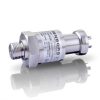 Seawater solution 60 inH2O hydrostatic pressure sensor for 190degF temperature
Seawater solution 60 inH2O hydrostatic pressure sensor for 190degF temperature Geothermal pool high temperature submersible level transmitter
Geothermal pool high temperature submersible level transmitter High temperature de-ionised water bath 300mm ATEX level sensor
High temperature de-ionised water bath 300mm ATEX level sensor Dairy 100 deg C wash water tank 2m range submersible level sensor
Dairy 100 deg C wash water tank 2m range submersible level sensor

